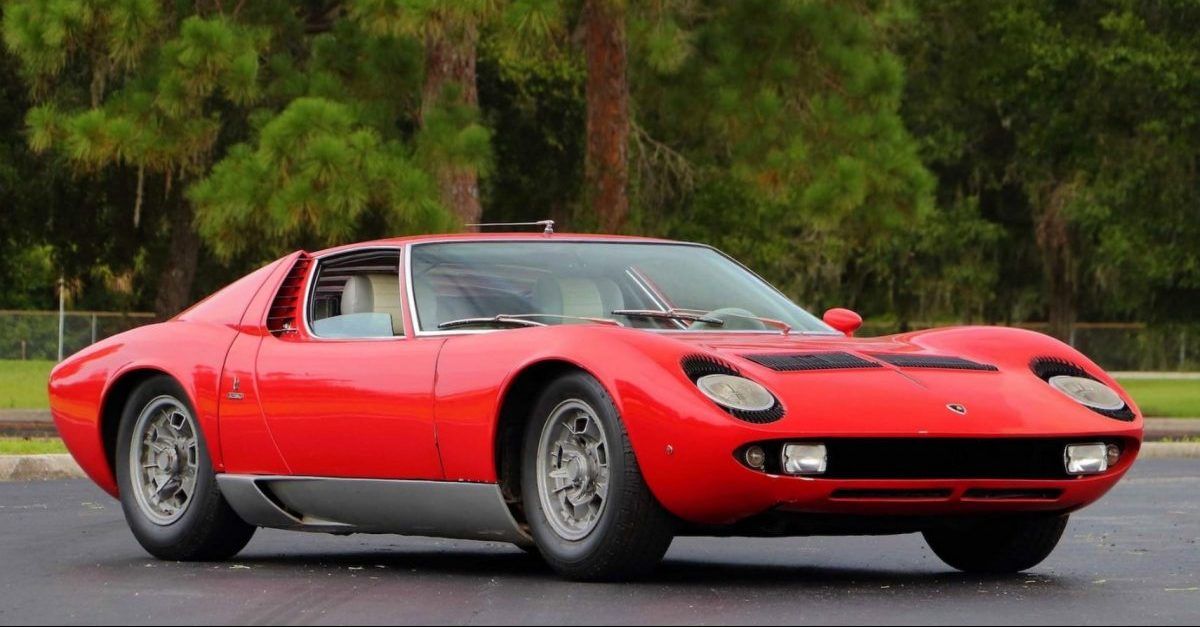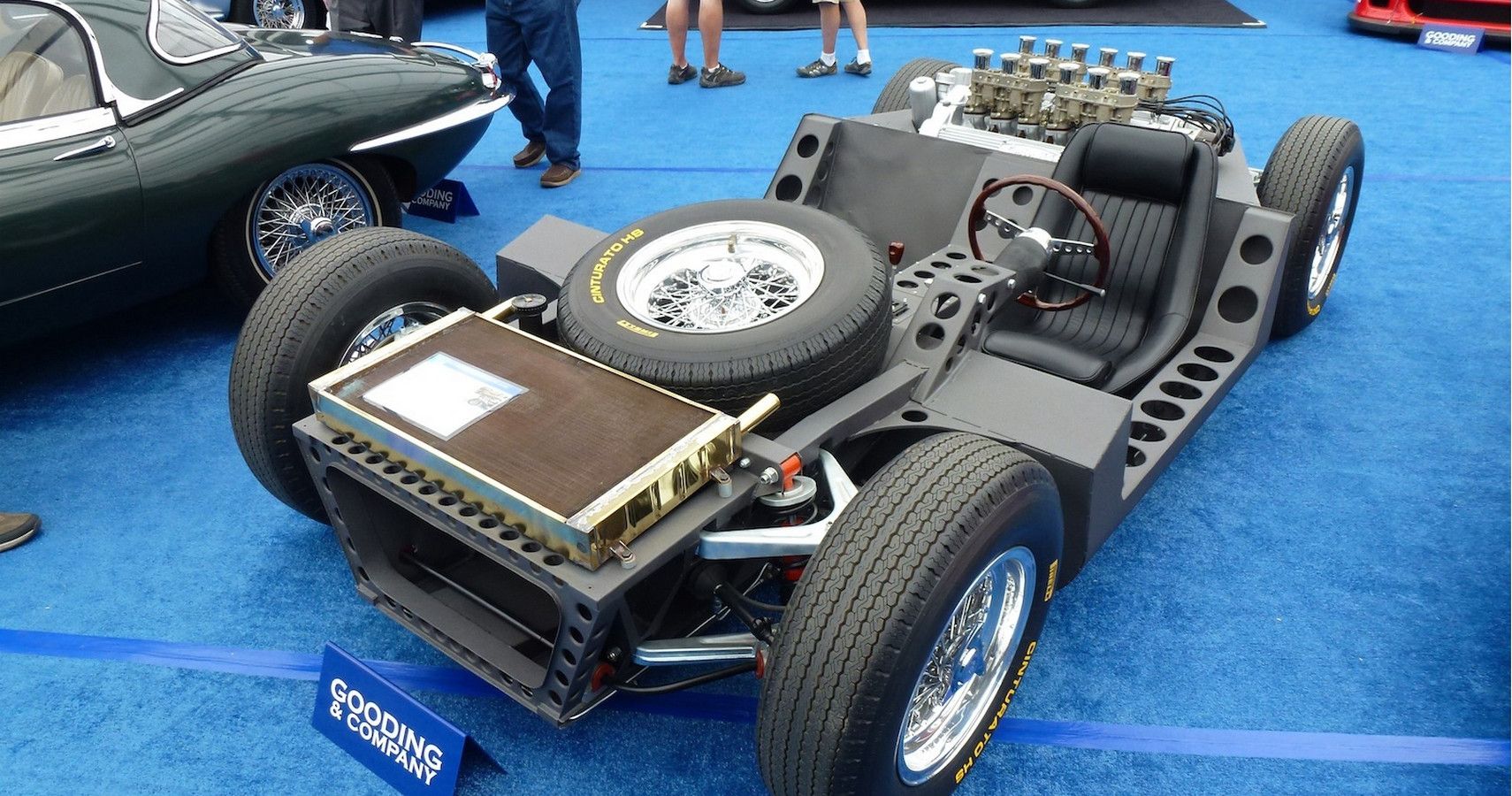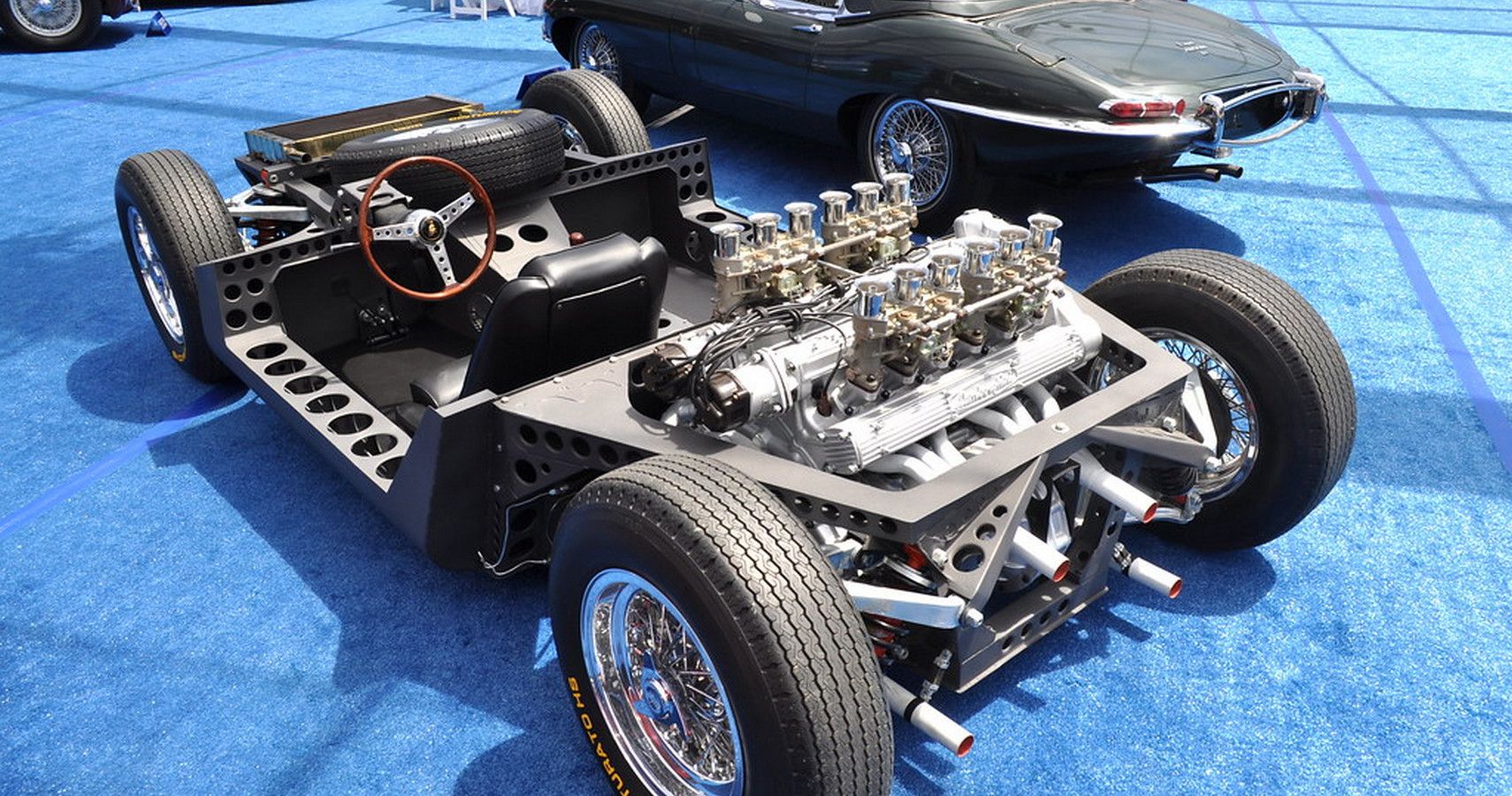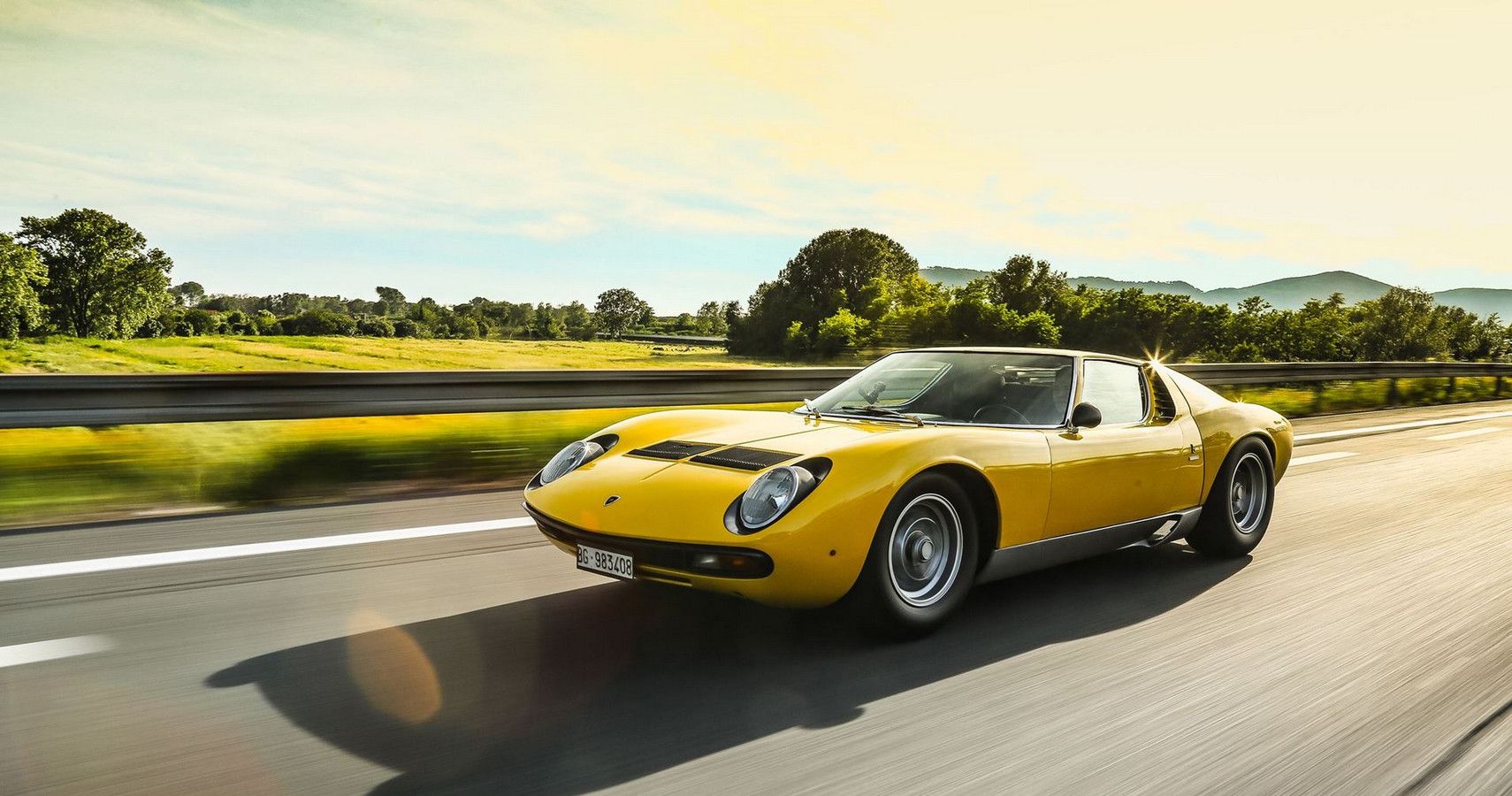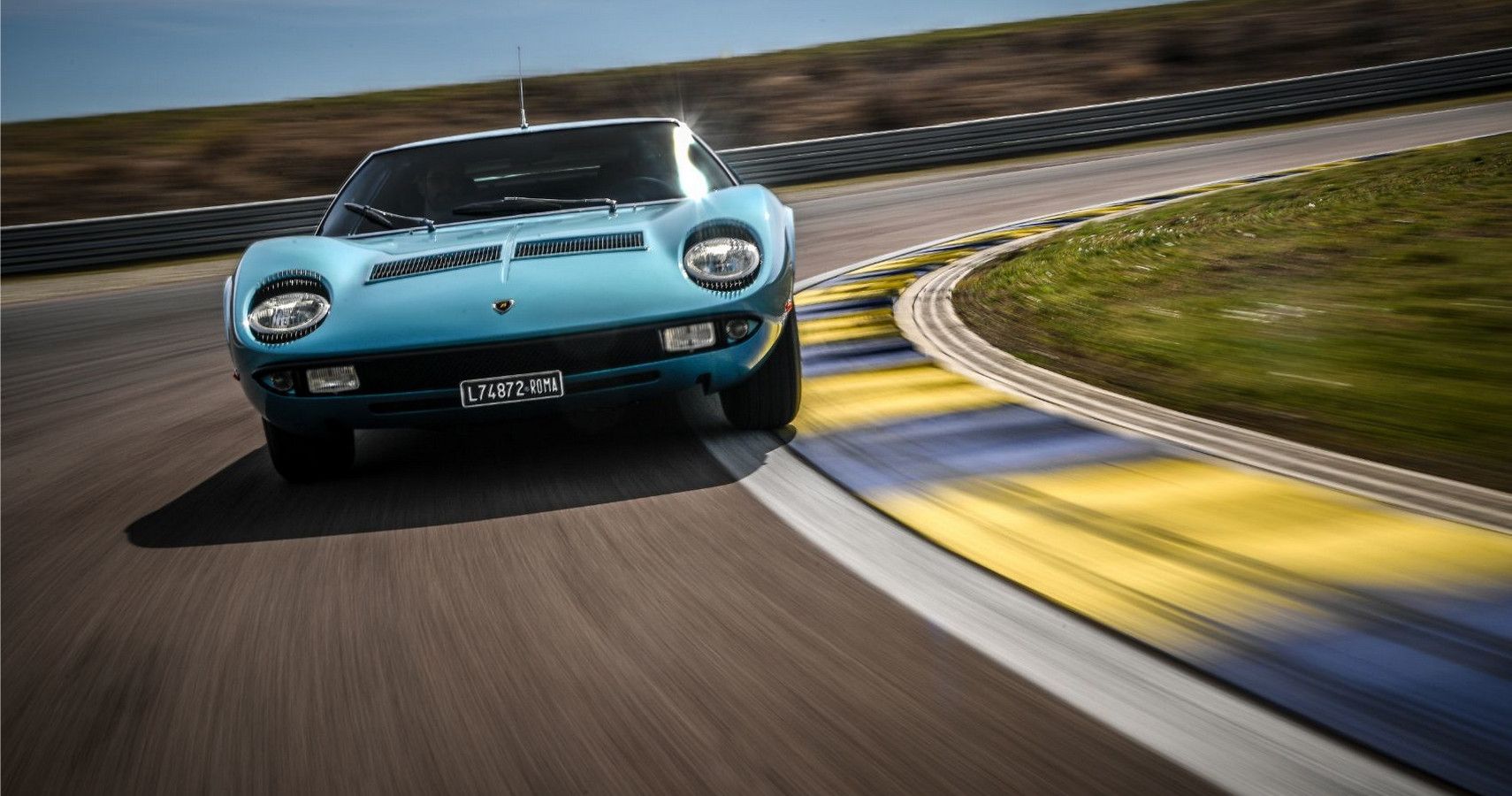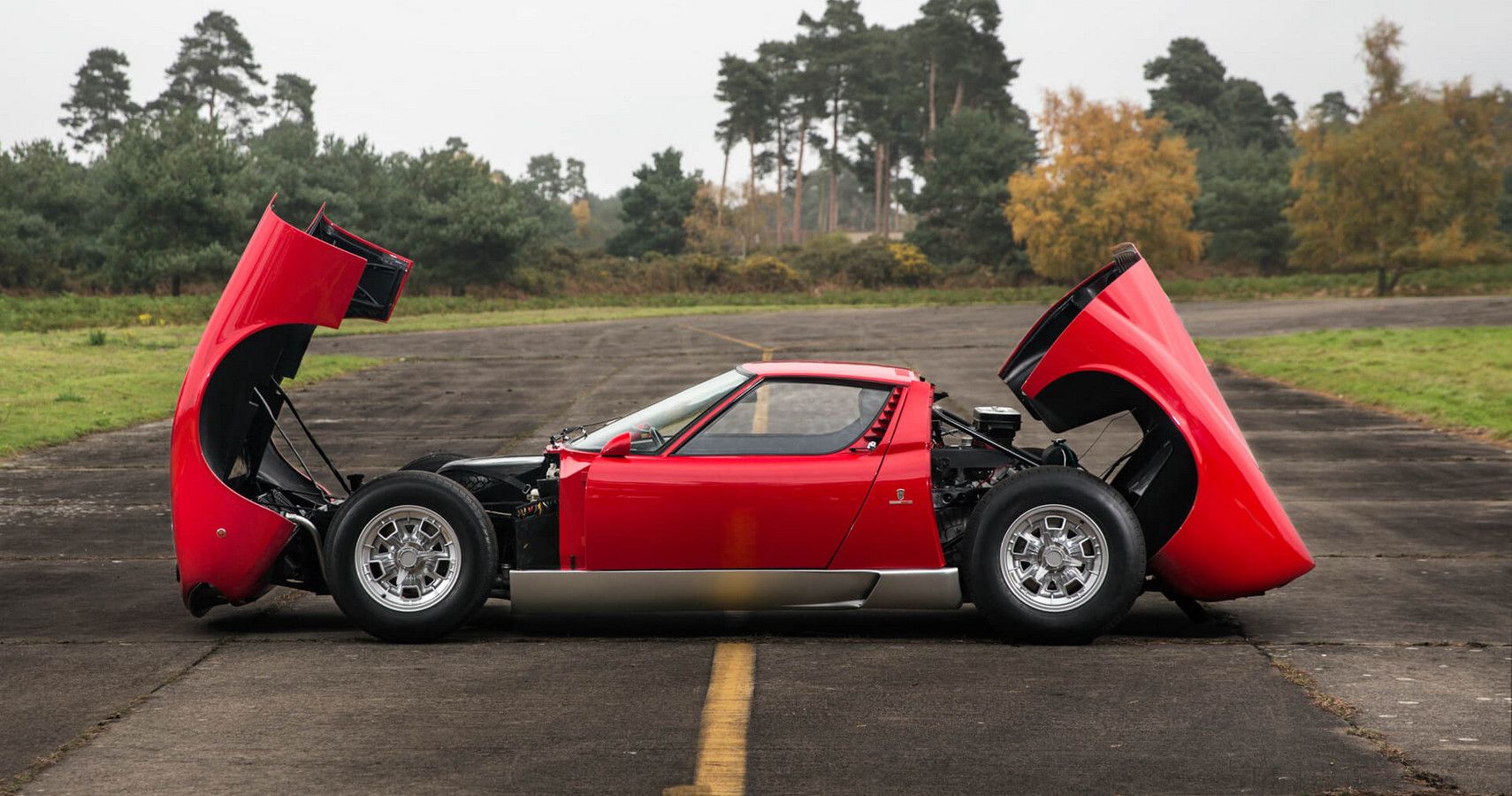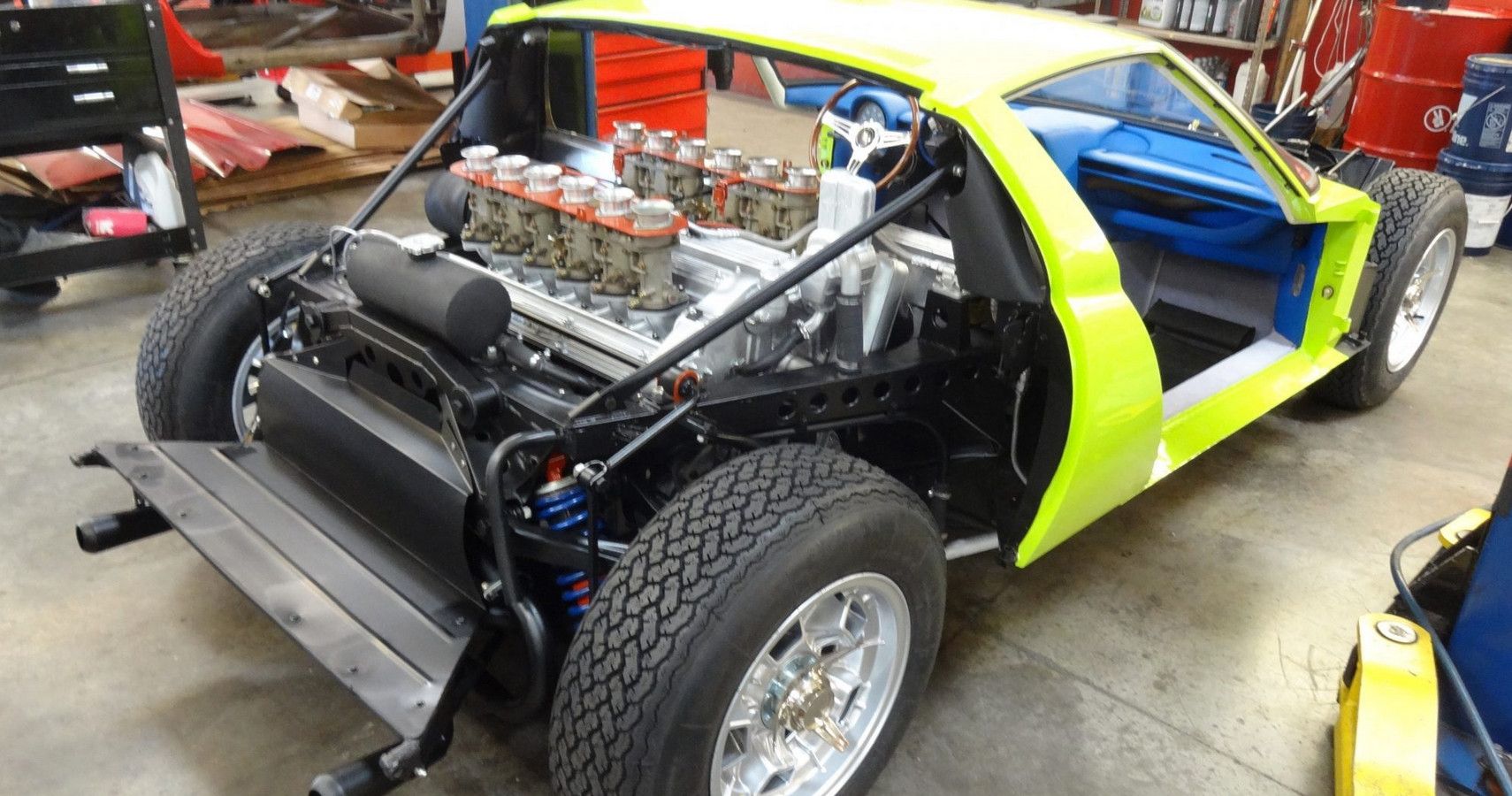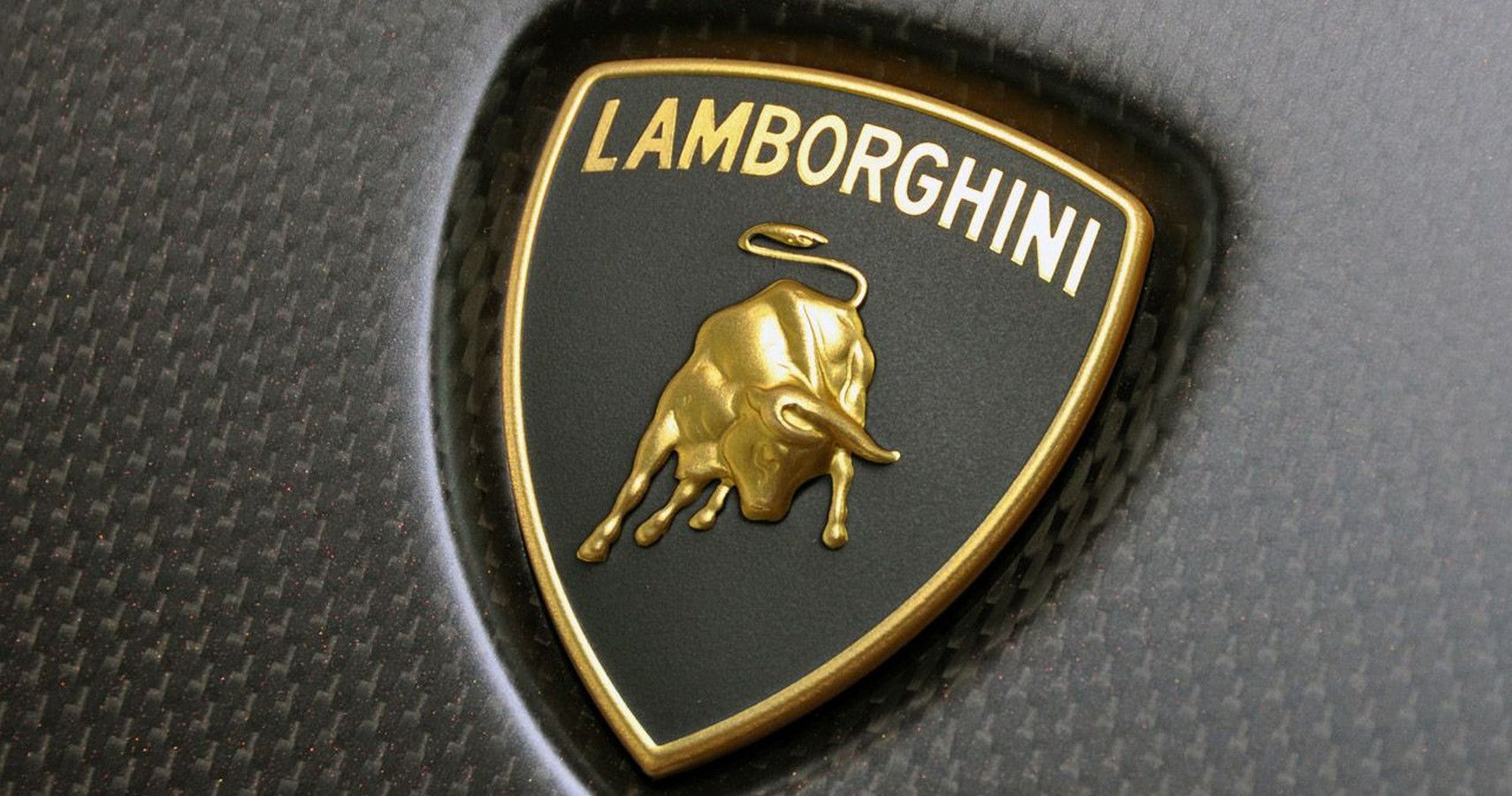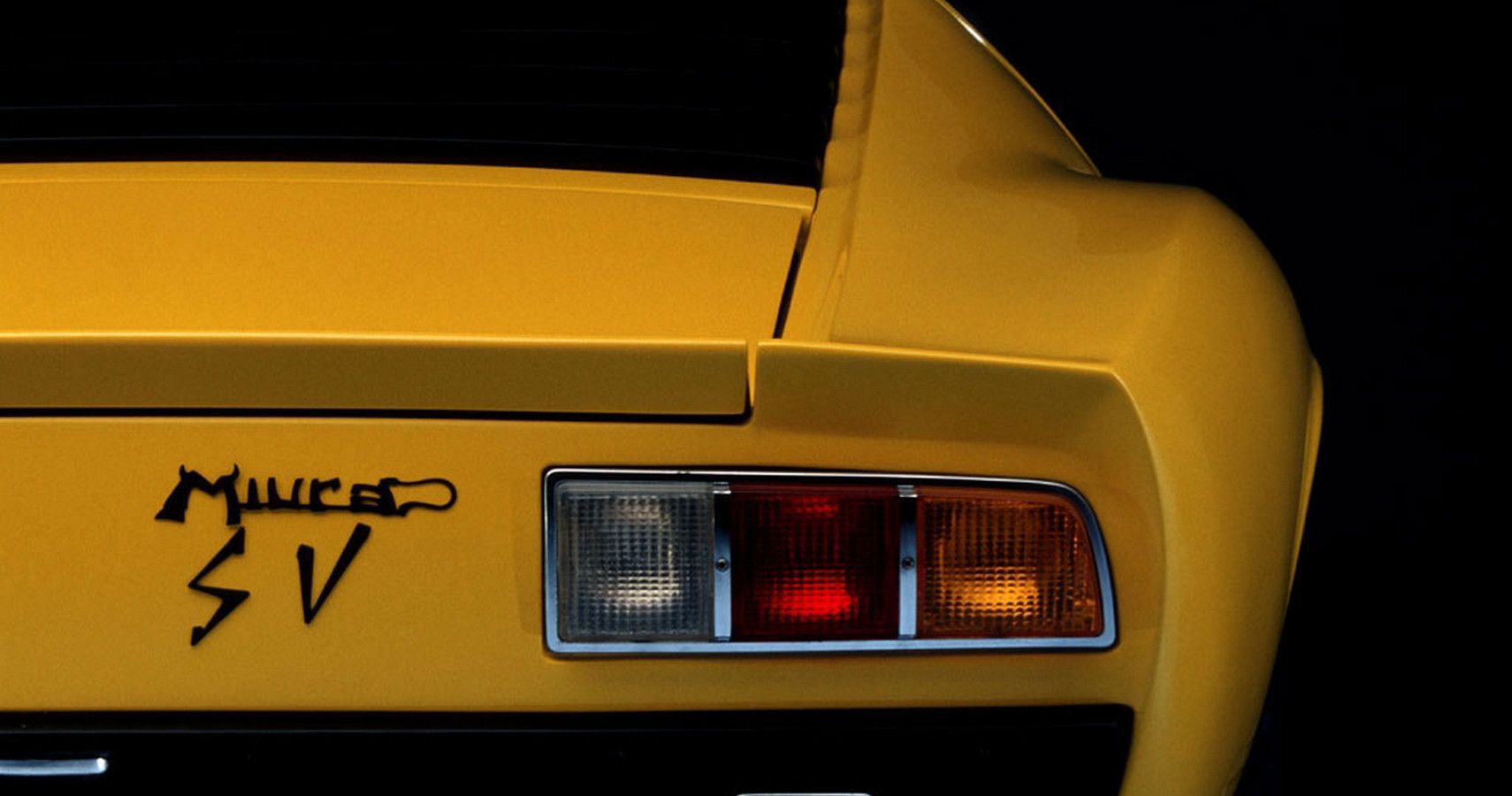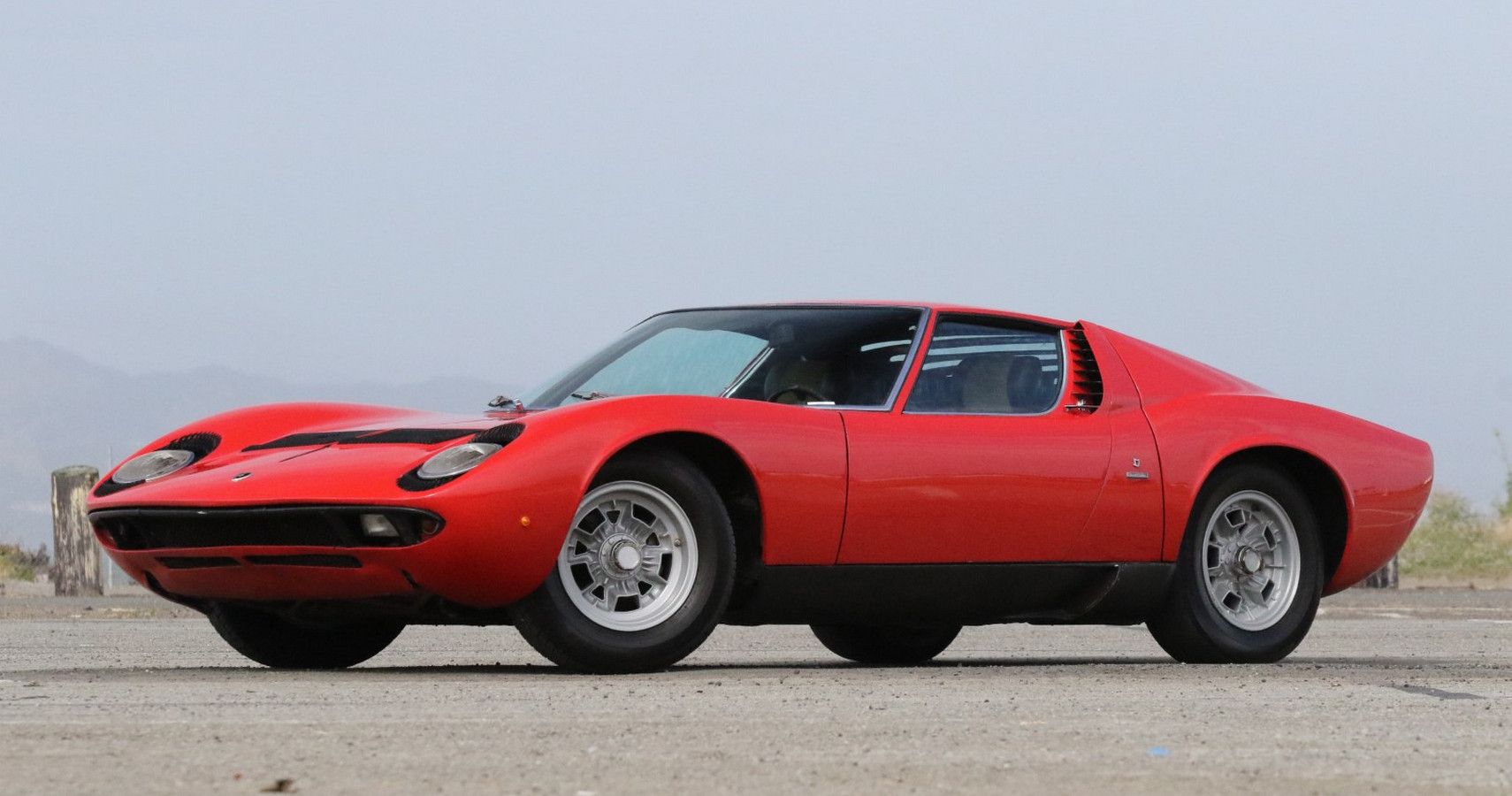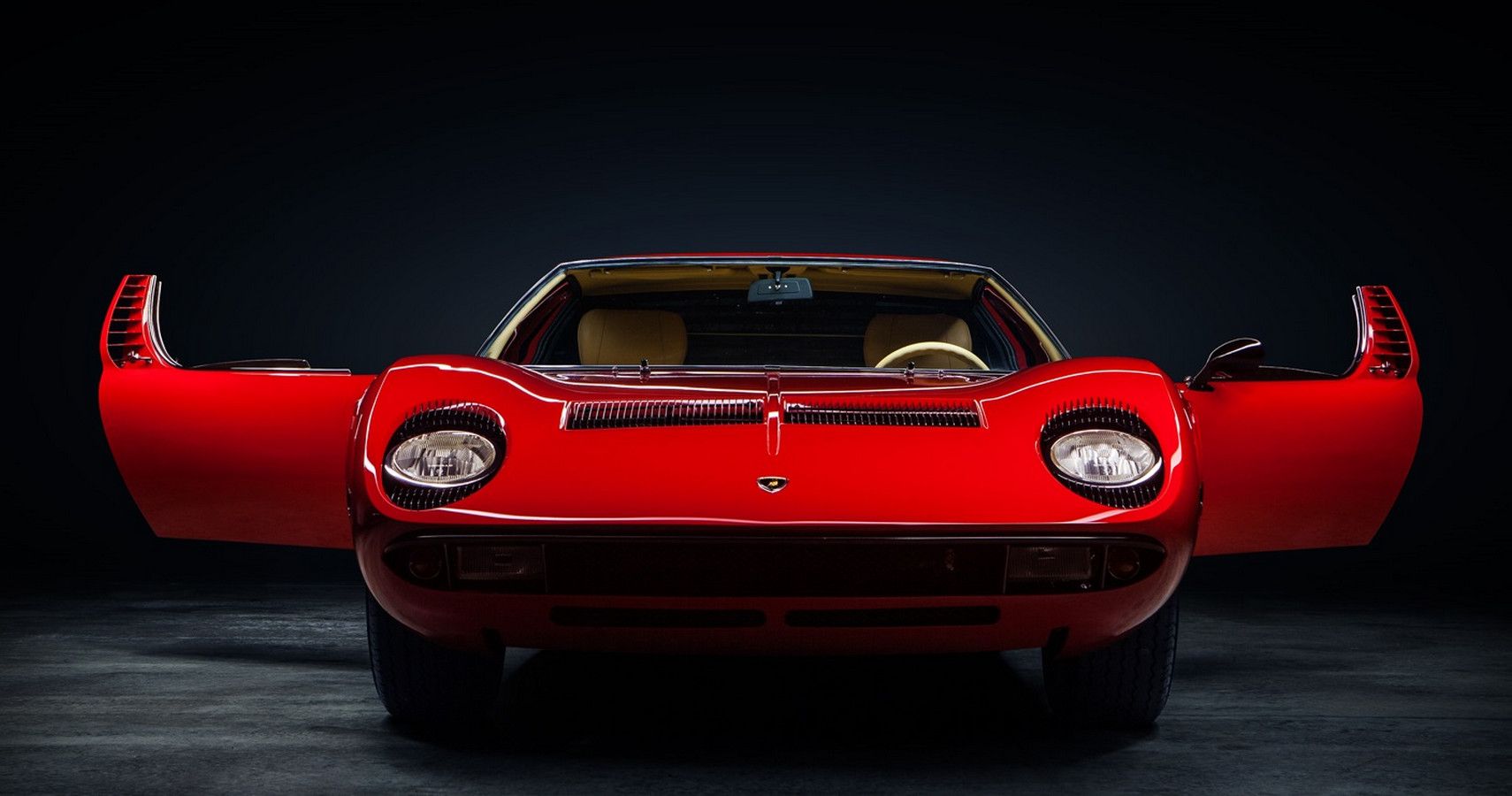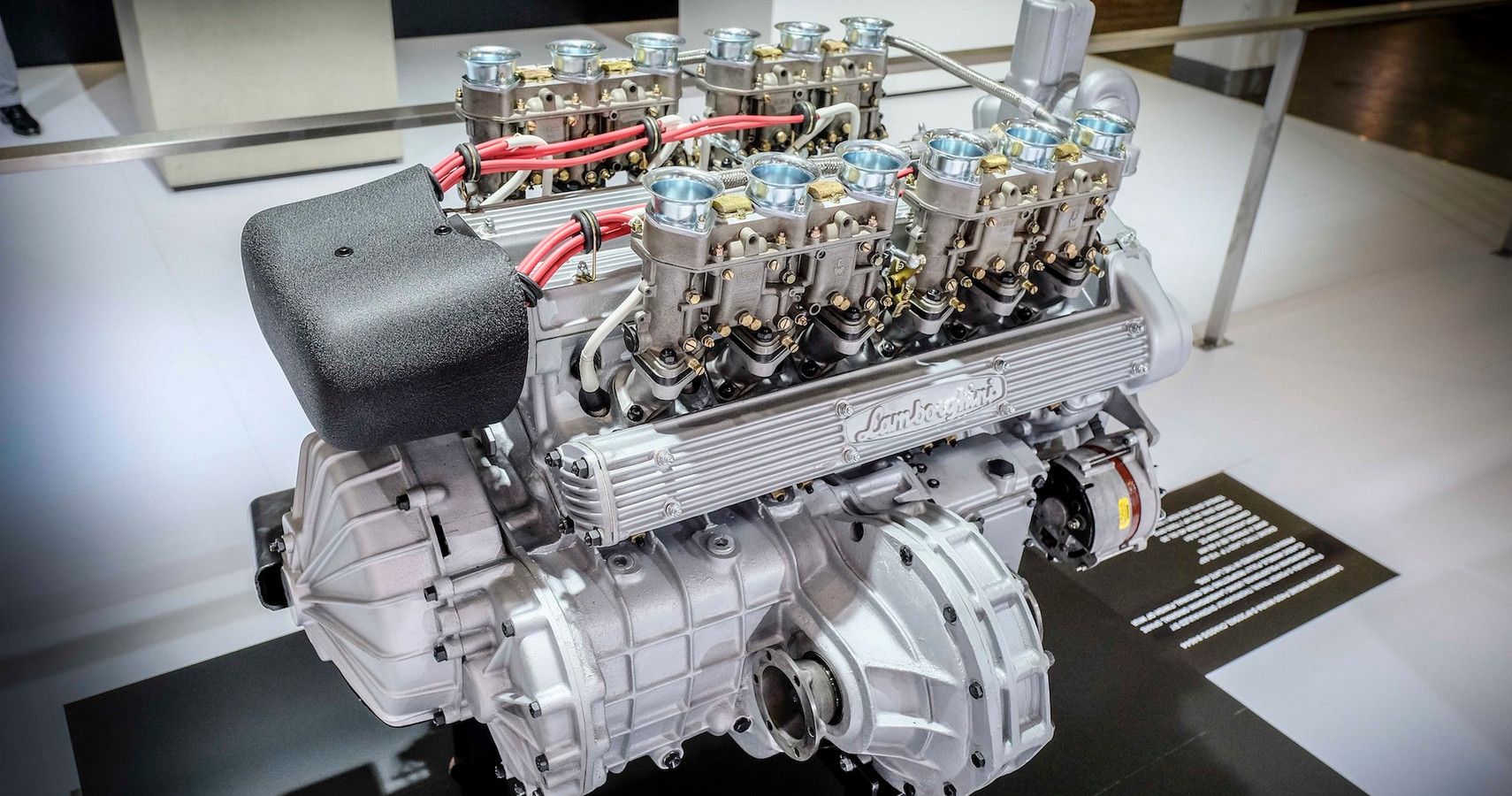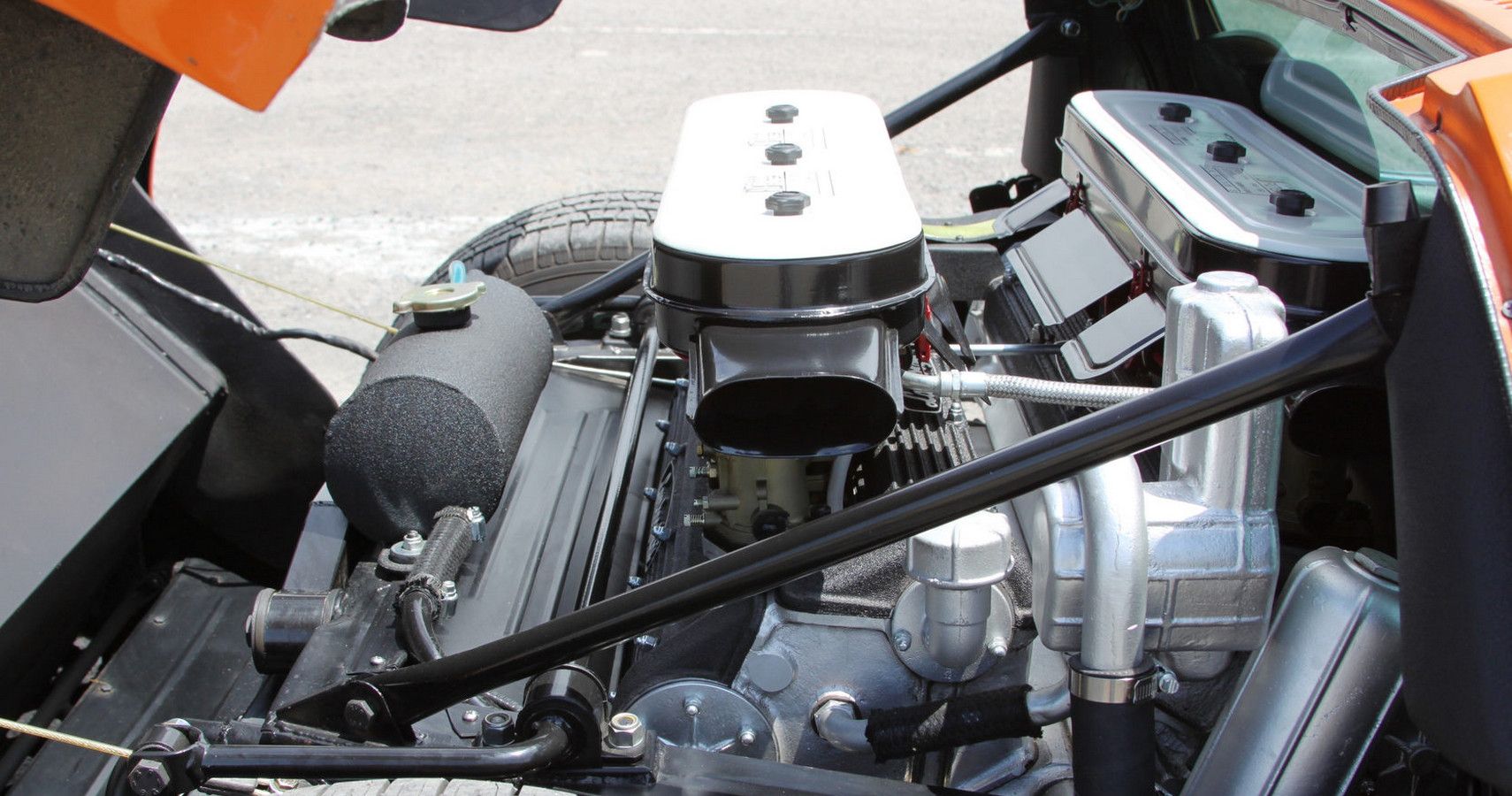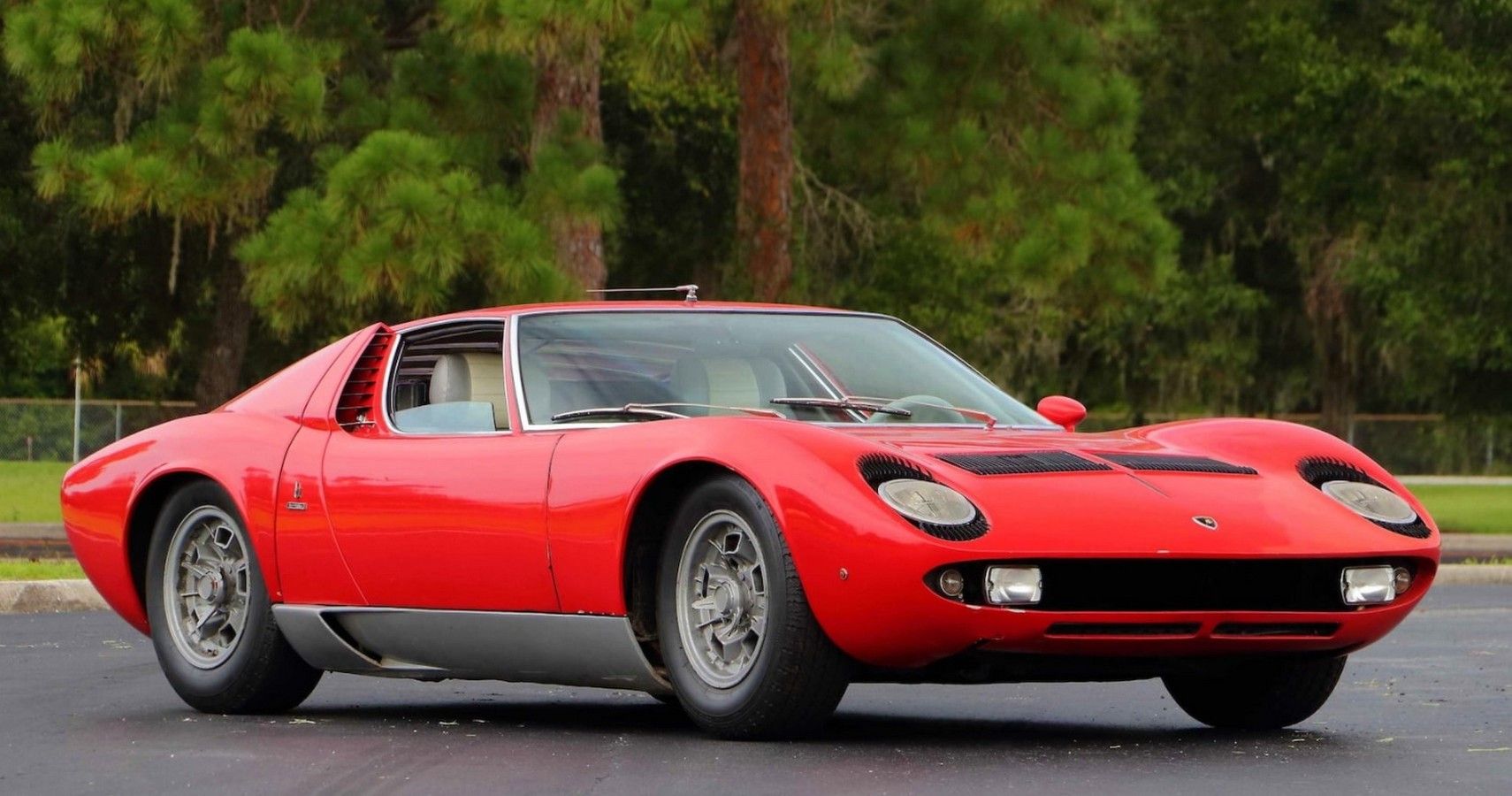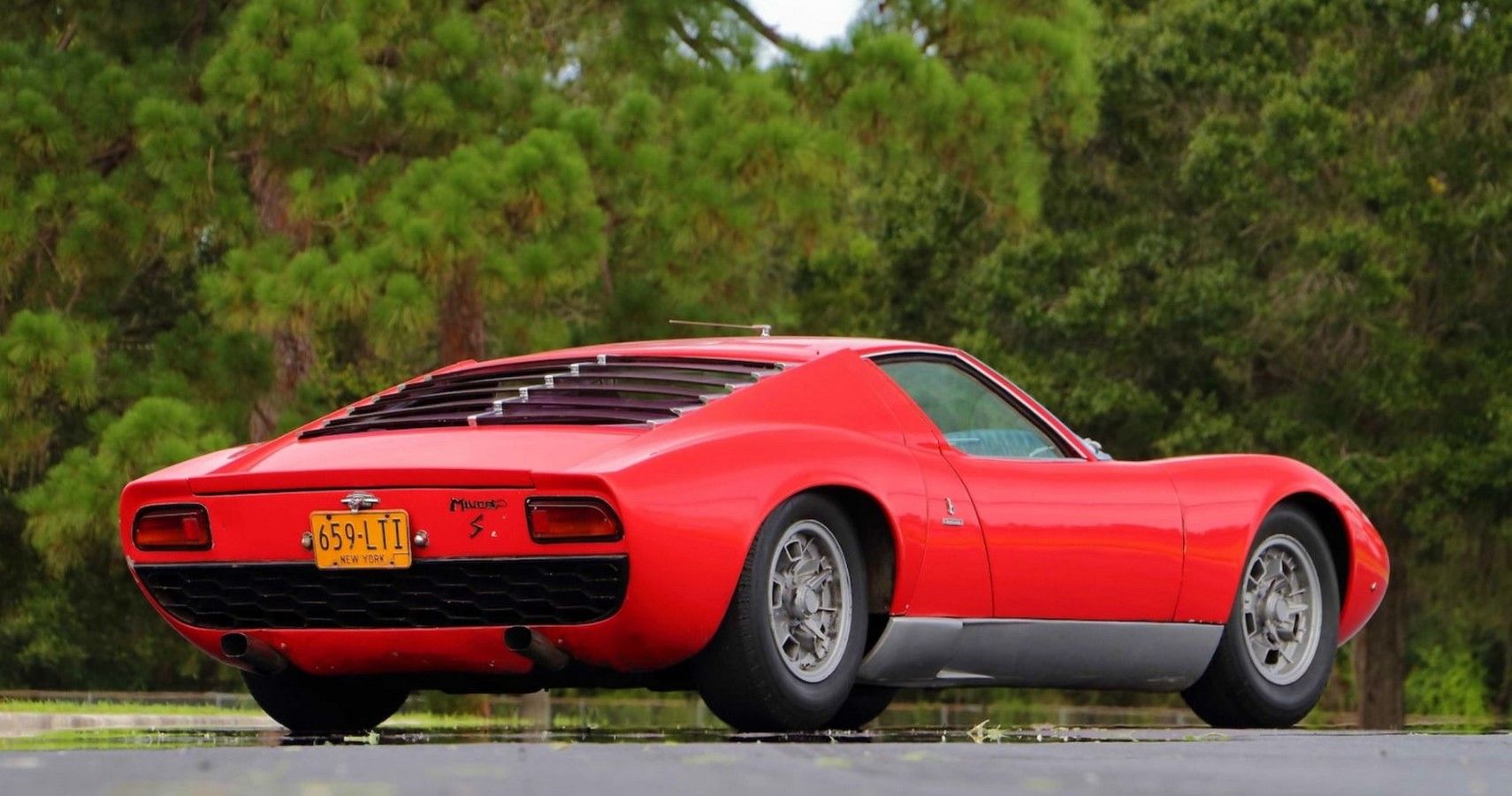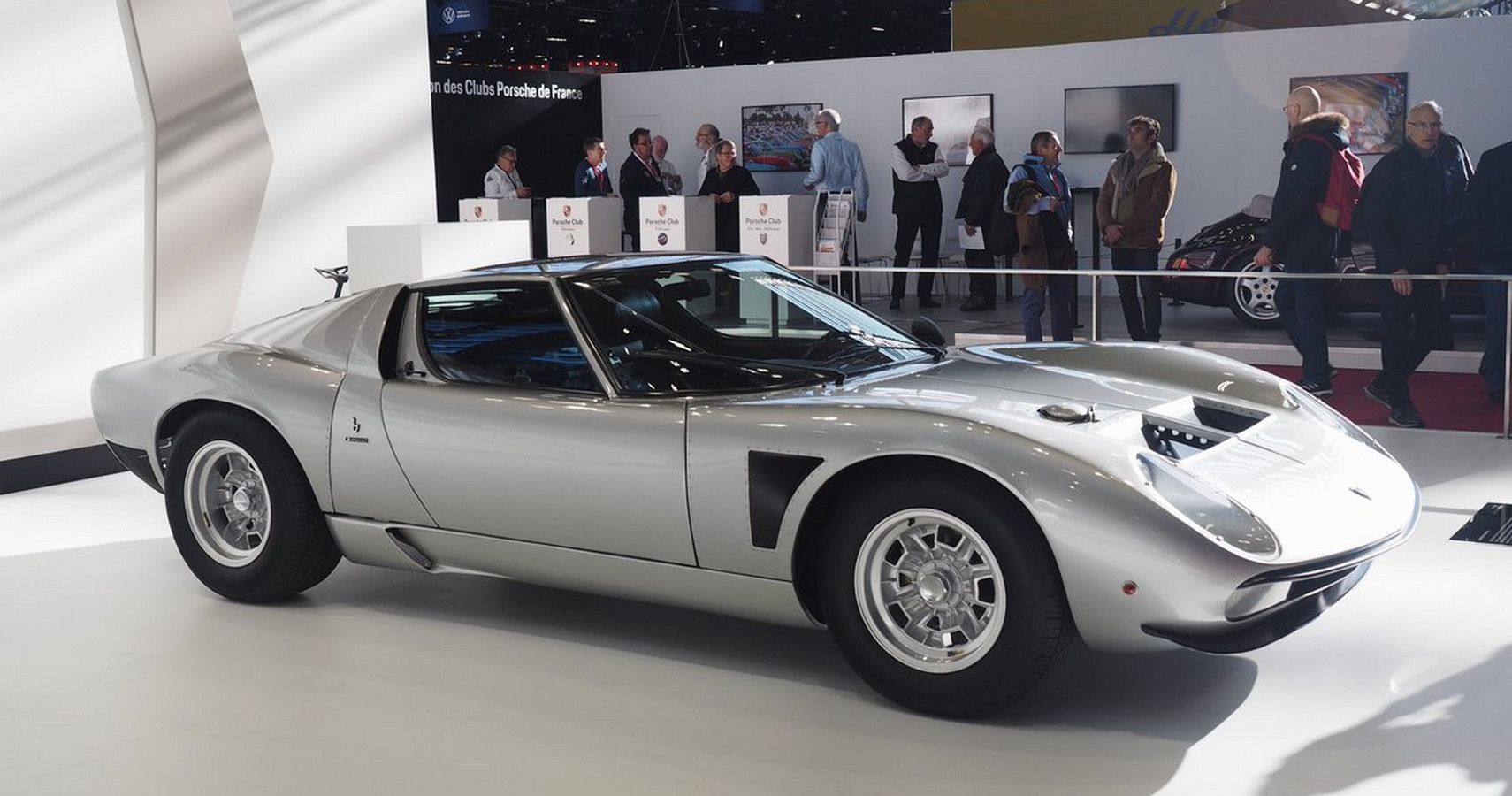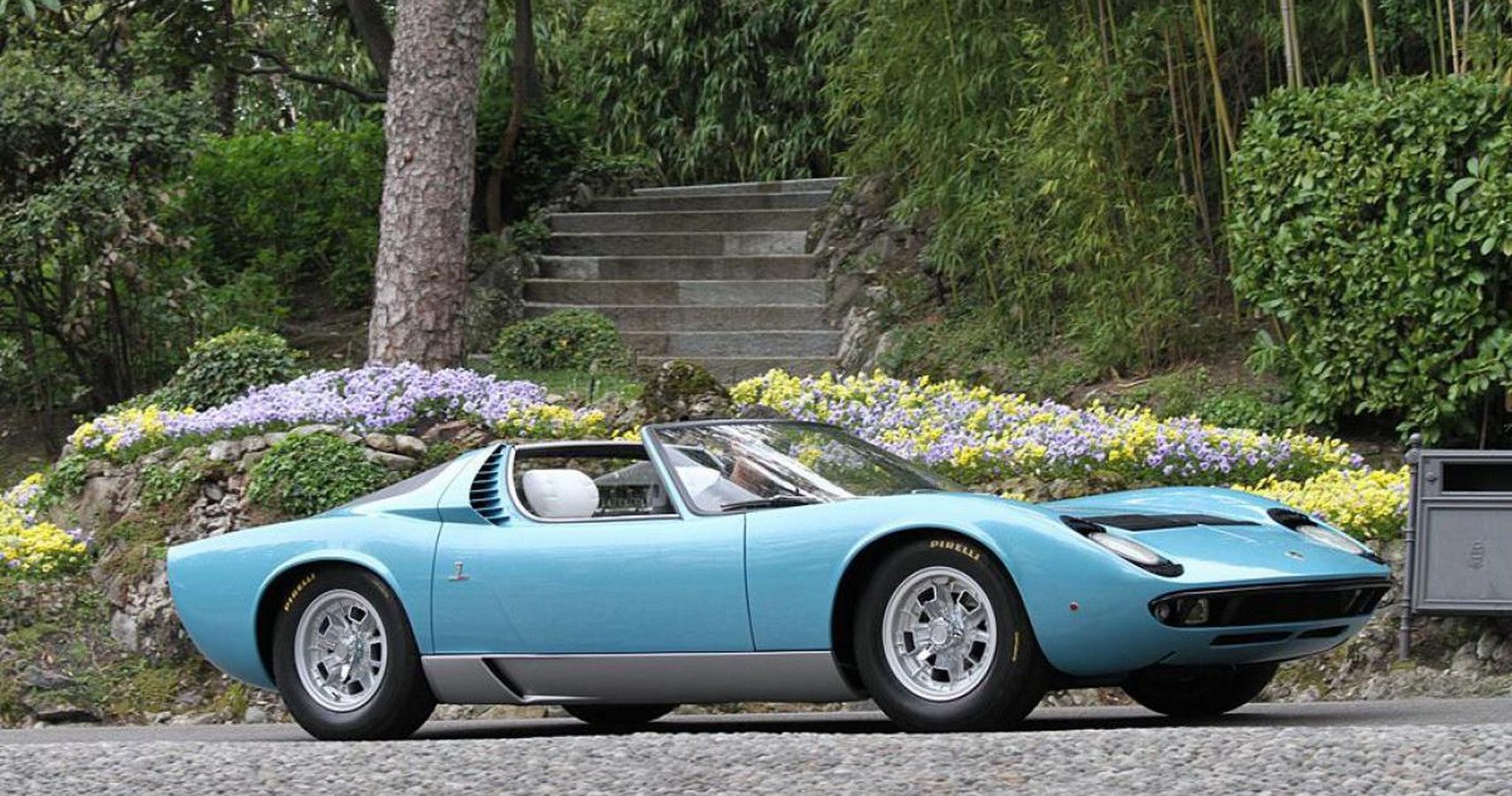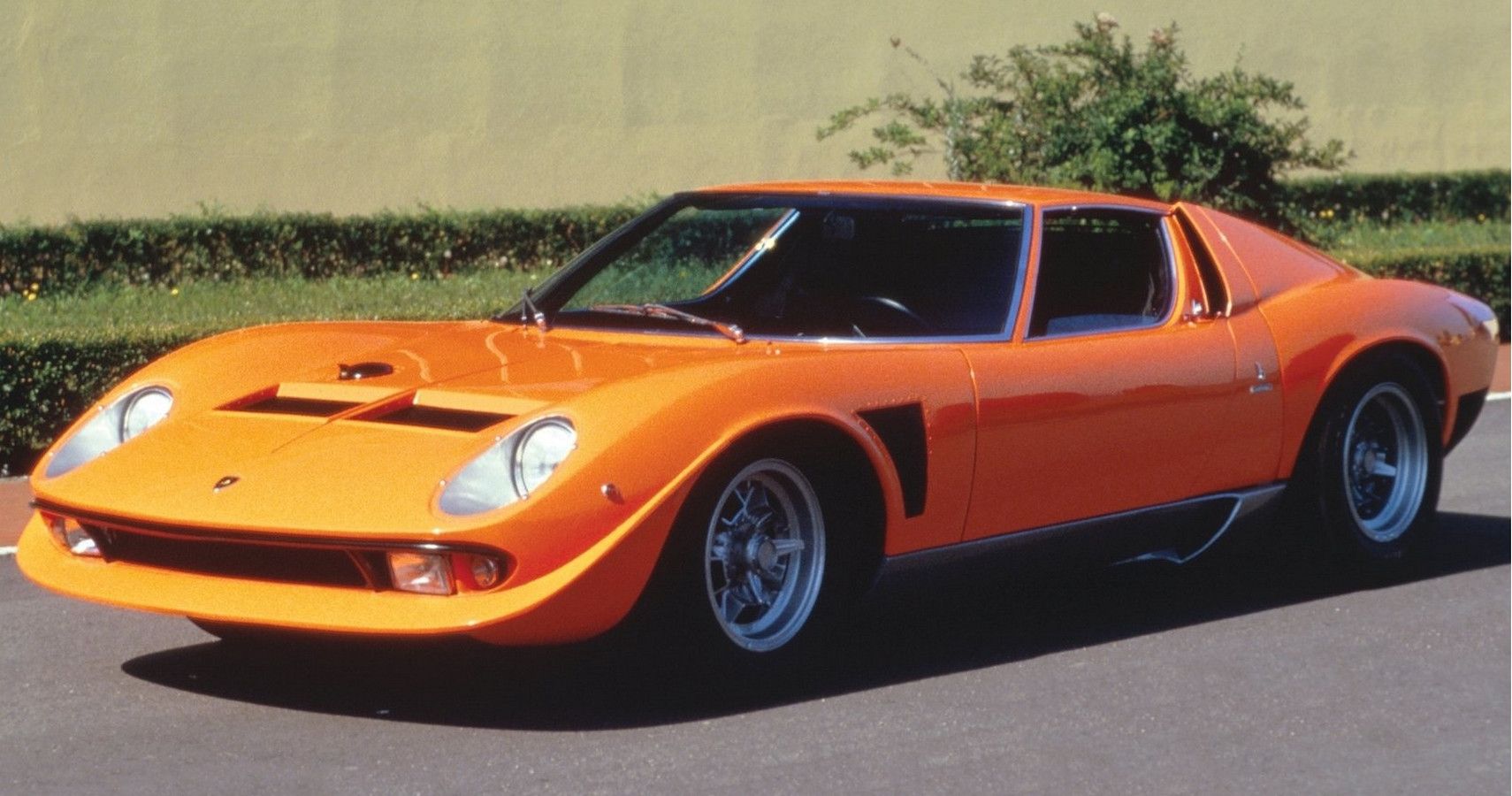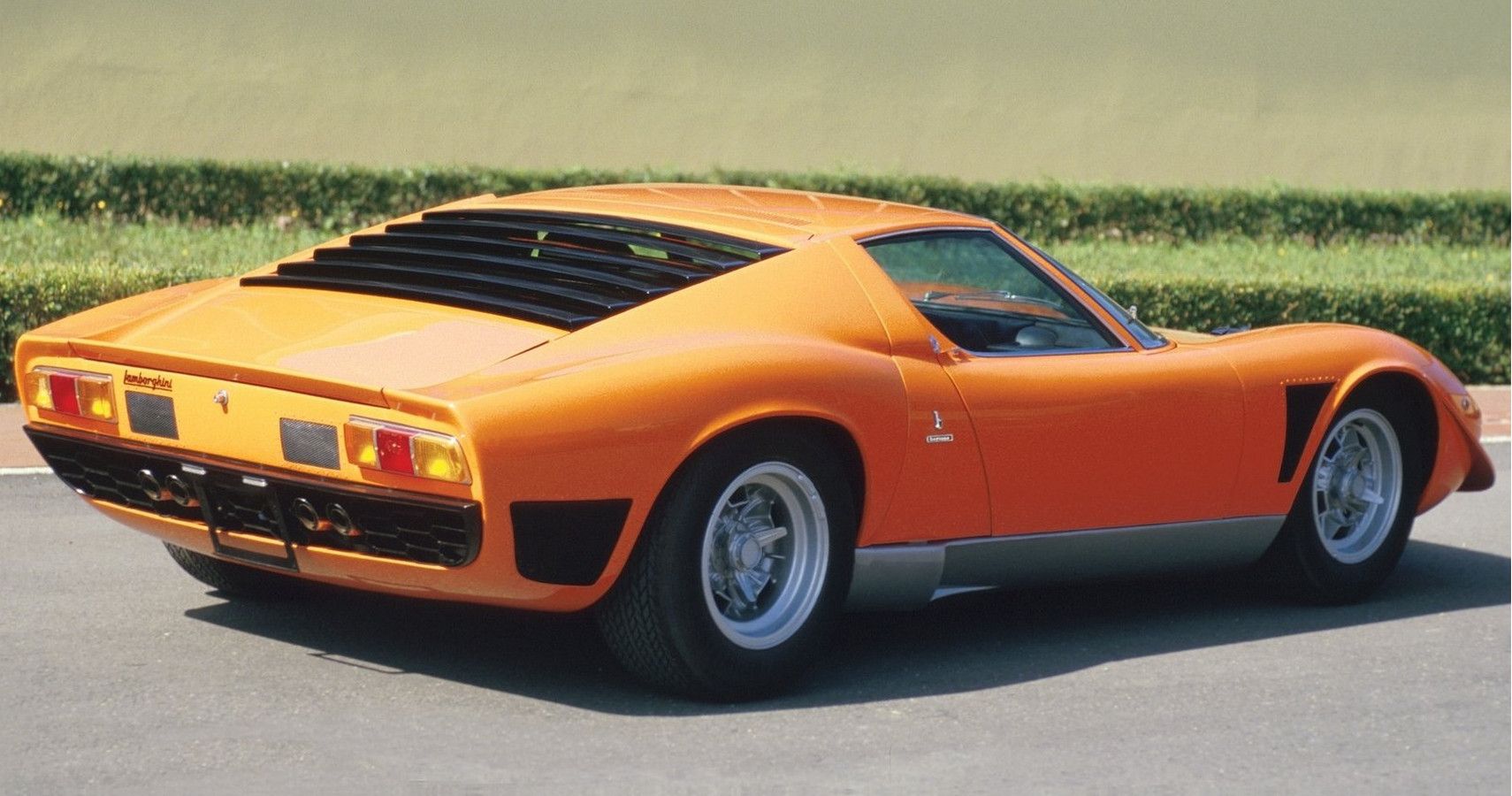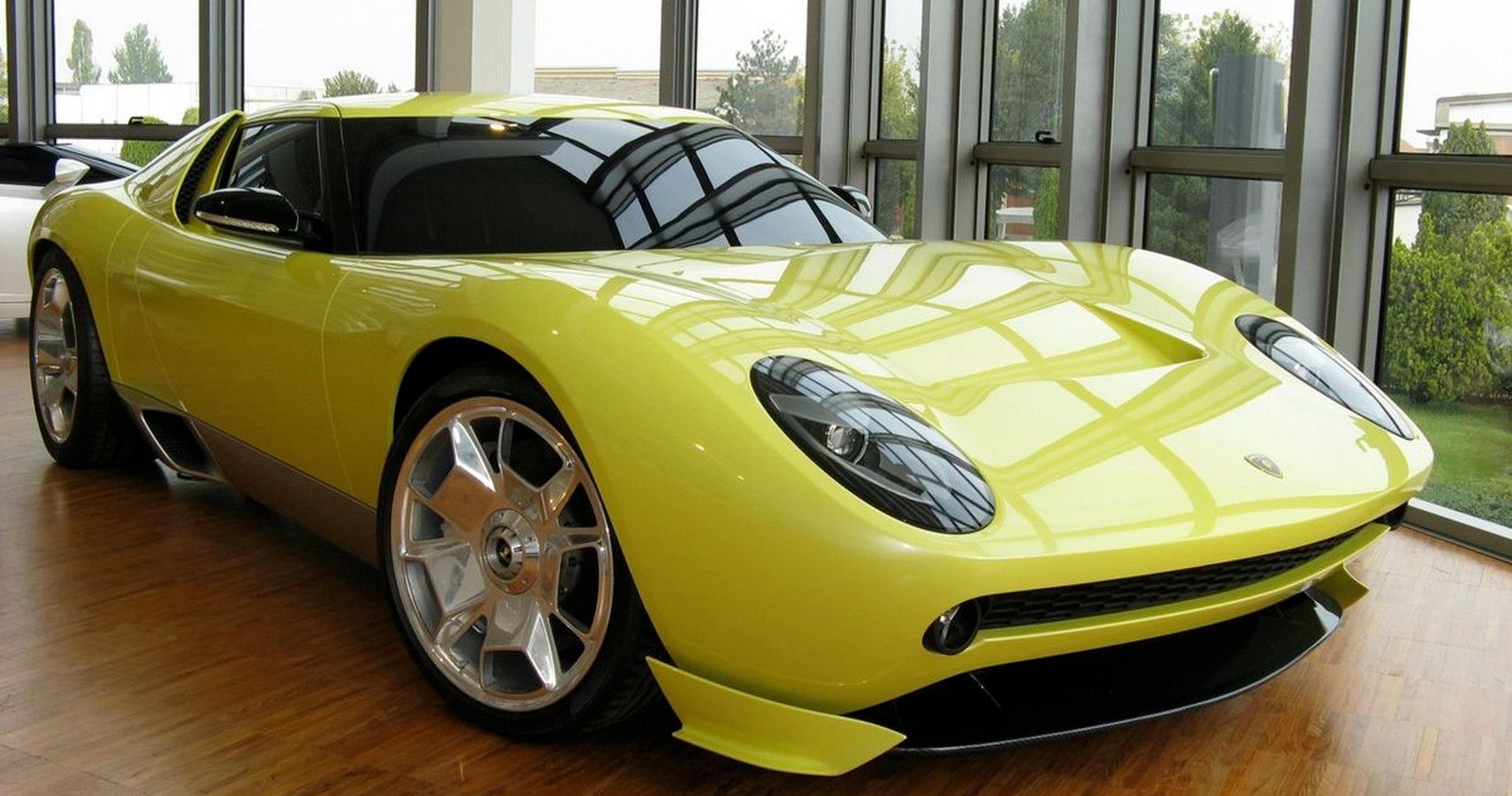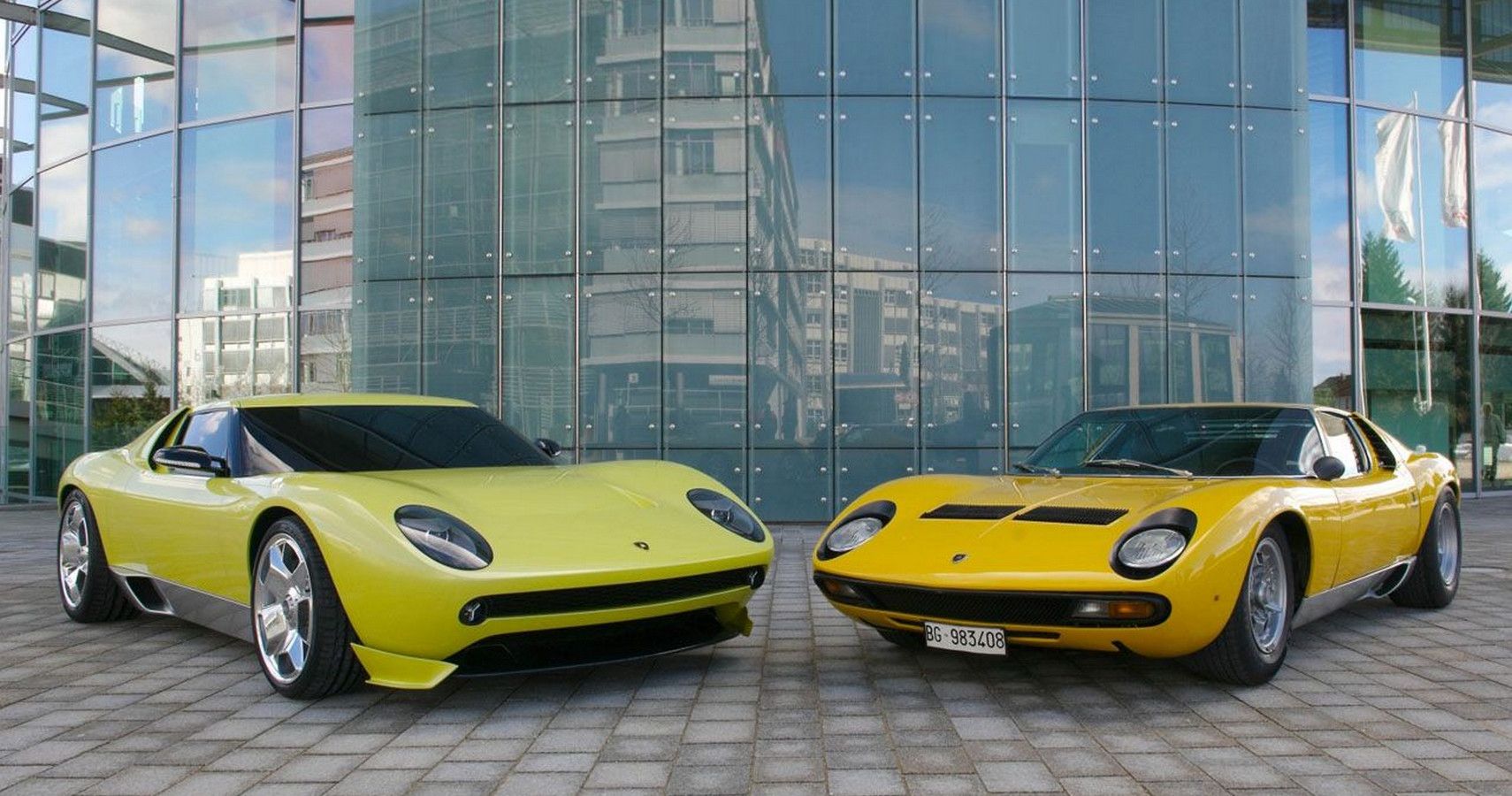Almost overnight, the young upstart carmaker, Lamborghini, transformed the world of supercars with the stunningly beautiful Miura. Not bad for a brand less than three years old.
Clearly, looks played a huge part in the Miura's success story. Even standing still, it looks fast, luring you in closer for a feel until you cannot resist sliding into the low-slung cockpit. Once inside, there is no climbing out without at least firing up the naturally aspirated V12 located just behind your head. And that's when it hits you, the Miura was the first production supercar with a mid-mounted V12 engine, the whole package at the time was so far ahead of the competition, other carmakers were forced to follow suit.
At just over half a century old, there are dozens of articles regarding the game-changing Miura. How much of that the average gearhead remembers is another matter. Here are 10 things everyone forgot about the Lamborghini Miura.
10 Early Development, Useful For Marketing If Nothing Else
Every great car starts with small ideas. The P400 started life as a three-man project, finding time after normal working hours to develop what would become the Miura prototype. Convinced they had a working idea for both a road car and successful racer, they just had to win over Ferrucio Lamborghini.
Even in basic rolling chassis prototype form, Lamborghini could recognize the merits of the Miura's design, allowing his top three engineers to continue. In a worst-case scenario, the P400 chassis would be a valuable marketing tool.
9 The World's Fastest Production Car In 1967
A historic long-running feud between Enzo Ferrari and Ferruccio Lamborghini has given us some of the greatest sports cars in history. One such design icon, Lamborghini's 1966 Miura would see the title of the fastest production car head to the Sant'Agata Bolognese carmaker a mere 4 years after its foundation.
The Miura P400 setting an outright maximum speed record of 175 MPH in 1967 taking the title away from the fearsome AC Cobra. Lamborghini's Miura would hold this record a mere 12 months before Ferrari came calling with the 365GTB Daytona.
8 The World's First Mid-Engined Supercar
For many, the Miura is the most beautiful car in history, its sleek low front profile serving to minimize drag, which in conventional sports cars of the day would have been dictated both the size and placement of the engine,
The Miura, however, used a rear mid-engined layout similar to the design used by grand Prix cars, this not only benefited aerodynamics but also served a much more important purpose. Placing the engine directly behind the cockpit also improves weight distribution, allowing for sharper and faster cornering.
7 Naming The Bull - Literally
Proudly displayed on the nose of every Lamborghini, the legendary raging bull logo has two meanings, both closely linked to its founder Ferrucio Lamborghini. Born on April 28th, under the zodiac of Taurus the bull combined with a fondness of bullfighting gave Lamborghini its Raging Bull emblem
Following the love of bullfighting, the Miura takes its name from a breed of fighting bull raised on the Miura Ranch outside of Seville. Miura bulls are noted for their size, ferocity, and cunning. The bullfighting connection remains today, each new model having a connection to the traditional sporting events.
6 Accidental Design Or Coincidence?
With such a low-sweeping front nose, you might think the Miura was the result of extensive aerodynamic testing. In reality, the Lamborghini before launch never saw the inside of a wind tunnel, the Bertone design happening purely by chance. Those stunning looks come with a hefty price, though. Appearing similar to an aircraft wing in profile, at high speeds the Miura starts acting like a wing, causing the nose to lift.
Viewed from directly ahead with its doors open, the rear edge of which resembles the profile of the horns of a bull, many believe this to be a deliberate hint at Lamborghini's bullfighting connection.
5 Transverse V12 engine Installation
Shifting the engine to behind the cockpit improved the Miuras profile, but also bought with a host of other installation issues. To minimize the rear overhang, Lamborghini used a novel transverse engine layout that hadn't been tried in a mid-engined design before.
Equipping the Miura with its 3.9-liter V12 understandably made the engine installation a tight fit, added to which the car's 5-speed manual transmission and associated differential had to occupy the same space. The Miura is a masterpiece of engineering, Lamborghini effectively uniting the engine and transmission into one assembly.
4 Italian Style Cost More Than A House
Boasting looks to stop any schoolboy gearhead in his tracks the Miura would have been a rare sight on any street during the '60s, with only 764 cars built in its lifetime, Lamborghini production numbers fell a long way short of the Sant'Agata factories output today.
It wasn't a case of limiting production, although Ferruccio Lamborghini originally wanted to limit numbers to just 30 cars. It was the fact that so few people could actually afford to buy one. Carrying a recommended sticker price of $20,000 made Miura ownership as expensive as buying the average house.
3 Production Run And Model Variants
Produced between 1966-74, Lamborghini's Muira being the Italian carmakers premium model spawned several variants over its production life, each adding a touch more refinement or more power.
The first model, P400 made do with 345 HP, it would be this base model that claimed the fastest production car title in 1967. Later P400S/SV cars with 365 and 385 HP, respectively, along with improved brakes and suspension changes are the most numerous in terms of production numbers. Other low volume models or one-off specials were completed using the same engine configuration as the SV.
2 The One And Only Official Jota
Where Enzo Ferrari had been fanatical about racing, Lamborghini preferred to concentrate on road cars, that's why the Miura never saw any extensive tack action. However, factory development driver Bob Wallace did head-up a factory sanctioned development of the Miura Jota.
Stripping away an incredible 800 lbs through the use of aluminum and plastic in place of steel and glass, the Jota project aimed to meet Appendix-J racing regulations. Further changes to the Miuras V12, including lighter cams and performance exhaust, boosted output to 440 HP, had the project reached fruition would have seen speeds over 200 MPH. Unfortunately, the sole example in the hands of a private owner was destroyed in a road accident.
1 Modern Miura Concept 2006
Despite a raft of modern Lamborghinis, the Miura name lives on almost legendary, leaving gearheads with the hope that one day the Miura might be resurrected. In 2006, Lamborghini design chief Walter De Silva gave fans everywhere a glimmer of hope, unveiling his impression of the modern Miura.
Unfortunately, with Lamborghini looking to the future, the Miura concept stands as a reminder of where the Italian carmaker has come from, there are no plans to put the concept into production.

